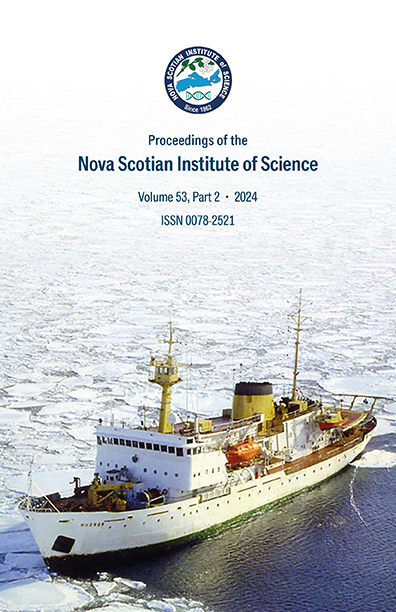Diet and biological characteristics of Atlantic Tomcod or Punamu, Microgadus tomcod (Walbaum, 1792) in Minas Basin, Nova Scotia
DOI:
https://doi.org/10.15273/pnsis.v53i2.12326Abstract
Atlantic tomcod are abundant in the Bay of Fundy, but their diet is unreported for Minas Basin. In this study prey content and biological characteristics of tomcod collected in the Avon River estuary of Minas Basin were examined. Their diet was numerically dominated by the amphipod Corophium volutator (Pallas, 1766) (Rate of Occurrence (RO) = 73.2%). Other major prey taxa consumed included Crangon septemspinosa Say, 1818 (29.3%), Gammarus spp. (19.5%), Polychaeta (14.6%), Portunidae (12.2%), Teleostei (9.8%), Isopoda (7.3%), and
Mollusca (3.3%). Of stomachs examined only 8.9% contained unidentifiable prey items. Every tomcod examined except one contained prey and the fullness index (HI) varied between 0.01-5.85%. Both mean total length and total body weight of females was significantly greater than for males (254 mm vs 202 mm; 143 g vs 78 g), and the condition factor (K) of both sexes was similar throughout the sampling period (Mean ± SD; 0.79 ± 0.13). Both mean male and female gonadosomatic index (GSI) increased significantly when approaching the winter spawning period, rising from 1.2 in early October to 11.6 by mid-December.
The diversity of prey consumed indicated that tomcod fed opportunis-
tically, but their predominate consumption of C. volutator was likely linked to the large populations of this amphipod on the intertidal mudflats of Minas Basin.
Keywords: Atlantic tomcod, Bay of Fundy, condition factor, Corophium volutator, fullness index, gonadosomatic index


